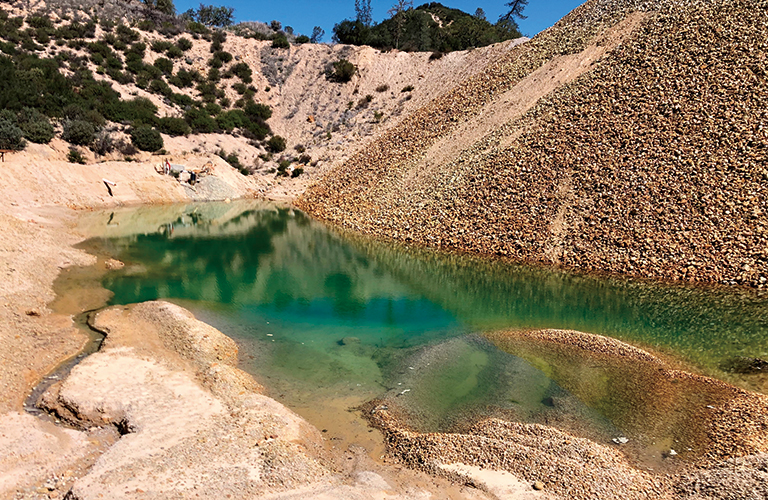In our use of water resources we are striving to analyze water risks and understand the status of water use as issues that may emerge in the future, and are working to ensure the proper use of water resources.
Water Risk Analysis
According to the results of the water risk analysis conducted using the Water Risk Filter*, the average score for the total basin risk for all our plants (weighted average taking into account the cement production volume) was 2.4. The highest total basin risk score was 2.8, which was 0.4 lower than that of the previous year. The volume of cement produced at the plant in question accounted for about 17.6% of the production volume of all the plants. However, when we analyzed conditions at that plant, no urgent issues were identified.
* A water risk mapping tool developed by the World Wide Fund for Nature (WWF). It is used to evaluate business impacts related to physical risks such as water scarcity and water quality. The maximum score is 5.0, and the higher the score, the greater the risk.
Water Consumption
Most of the water used at our cement plants is for the cooling of production equipment, exhaust gas and on-site power generators. Therefore, the water discharged from the plants is mostly cooling water, which is not polluted as defined in the Water Pollution Control Act. All the fresh water used at the plants is circulated and reused, except for the household wastewater, as we strive to reduce our water withdrawal and lessen the impact of wastewater on bodies of water. Seawater is used to cool on-site power generation facilities at our plants near the ocean and then released back into the sea after use.
Our total fresh water used in FY2023 was about 11.86 million m3 and our fresh water used to produce one tonne of cement was 0.387 m3. However, most of this water is not used as a raw material and evaporates after being used to cool equipment or gas.
(Unit: thousand m3)
| FY2019 | FY2020 | FY2021 | FY2022 | FY2023 | |
| Surface water | 6,521 | 5,626 | 5,355 | 5,527 | 5,346 |
| Ground water | 16,884 | 18,656 | 18,759 | 18,706 | 17,673 |
| Industrial water | 3,251 | 3,325 | 3,078 | 2,108 | 1,630 |
| Total fresh water withdrawal (I) | 26,656 | 27,607 | 27,192 | 26,341 | 24,649 |
| Total seawater withdrawal | 149,776 | 147,372 | 146,232 | 146,894 | 145,476 |
| Total water withdrawal | 176,432 | 174,979 | 173,424 | 173,235 | 170,125 |
| Total fresh water discharge (O) | 12,167 | 13,674 | 13,447 | 13,246 | 12,792 |
| Total seawater discharge | 149,781 | 147,377 | 146,368 | 147,062 | 145,639 |
| Total water discharge | 161,948 | 161,051 | 159,815 | 160,308 | 158,431 |
| Total fresh water used (I-O) | 14,489 | 13,933 | 13,745 | 13,095 | 11,857 |
Appropriate Use of Water Resources
At present there are no specific concerns regarding water resources that may be raised by local communities. However, we are striving to reduce water withdrawal with a view to conserving water resources. In the future, we will maintain close communication with local communities and contribute to the appropriate use of local water resources.
Taiheiyo Cement Philippines, Inc. supplies clean water to local communities from wells drilled by the company for water to use in its plants. At CalPortland Company’s Rocky Canyon Aggregate Quarry in California, USA, a system for the sustainable use of water has been built to improve the collection and storage of rainwater and spring water at the site. Developing these water resources has made it possible to secure a supply of the water it needs in its work, without having to build new wells or increase the volume of ground water it extracts, and also to keep the amount of water that drains out of the site, which is subject to strict regulations, to a bare minimum.

System for the sustainable use of water (CalPortland Company)
Water Resource Conservation
In quarrying we also pay close attention to protecting not only terrestrial animals and plants but also water resources such as rivers and natural springs. From the perspective of conserving water resources, spring water and rainwater is discharged from quarrying after treatment to minimize impact on the environment outside of the quarrying area by passing through regulatory pond. In some quarries we drill wells for domestic water and supply this water to local communities for everyday use.
